Folding Window Aluminum Profile
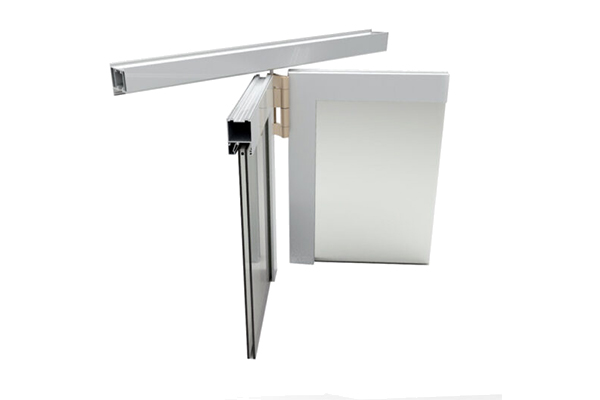
Folding windows have gained popularity in modern architecture for their versatility, allowing seamless indoor-outdoor transitions. The aluminum profiles used in folding windows are pivotal to their functionality and aesthetics. In this article, we will provide an overview of folding window aluminum profiles, explore different types, discuss material choices, and delve into the corresponding hardware options.
Folding window aluminum profiles serve as the fundamental framework for these windows. They determine the window’s appearance, durability, and performance. These profiles are typically crafted from aluminum alloys, chosen for their lightweight properties, resistance to corrosion, and malleability. Folding window aluminum profiles offer excellent insulation and durability, making them suitable for a variety of architectural applications.
Types of Folding Window Section
Folding window profiles come in various types, each with distinct characteristics

Classic Profiles
Classic folding window profiles feature a traditional design with robust frames. They are well-suited for applications where structural integrity and insulation are paramount.
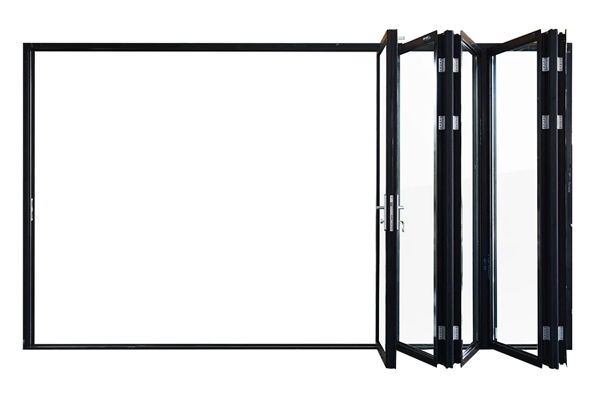
Slimline Profiles
Slimline profiles are characterized by their sleek and minimalistic appearance. They offer a contemporary aesthetic with thin frames, allowing for maximum visibility and an unobstructed view.

Bi-Fold Profiles
Bi-fold profiles are designed specifically for folding windows that fold in a concertina-like manner. They offer excellent versatility and can create wide openings when fully opened.
Windows Aluminum Extrusion Materials
Aluminum Choices
6061 Aluminum Alloy
Featuring higher strength and durability, 6061 aluminum alloy is suitable for larger folding window installations that require additional structural support.
6063 Aluminum Alloy
This is a common choice known for its corrosion resistance and ease of fabrication. It is suitable for most folding window applications and offers a cost-effective solution.
Thermal Break Profiles
These profiles incorporate thermal breaks, typically made of a non-metallic material, to enhance insulation and reduce heat transfer. They are an excellent choice for energy-efficient designs.
Customize Your Aluminum Profile
Specification
| Material | 6000 Series aluminum alloy |
| Temper | T3-T8 |
| Thickness |
General profiles thickness: 0.8mm—1.4mm; Anodizing protection thickness: 8-12 micron; Normal powder coated thickness: 60-100 micron |
| Surface treatment | Anodizing, Electroplating, Polishing, Sandblasted, Powder coating, Brushed, PVDF, etc. |
| Color | Customized Color |
| MOQ | 500KG |
| Delivery time | 15-20 days after sample confirmed & down payment, or negotiated |
| Port | Guangzhou,Ningbo, Shanghai |
Finished Awning Windows
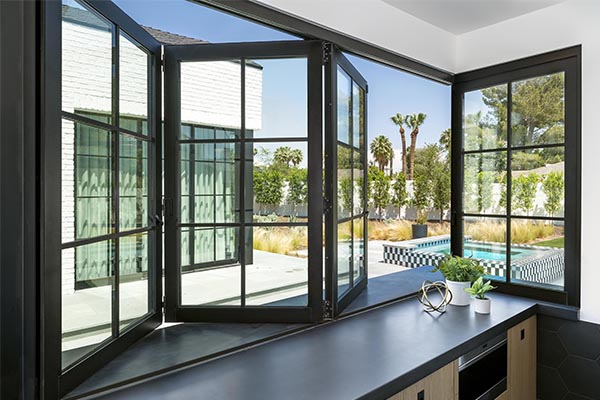

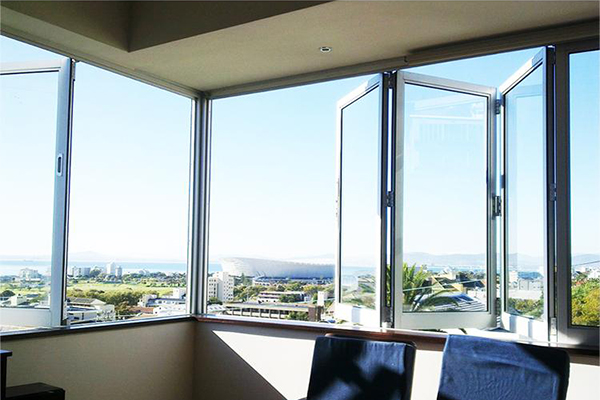
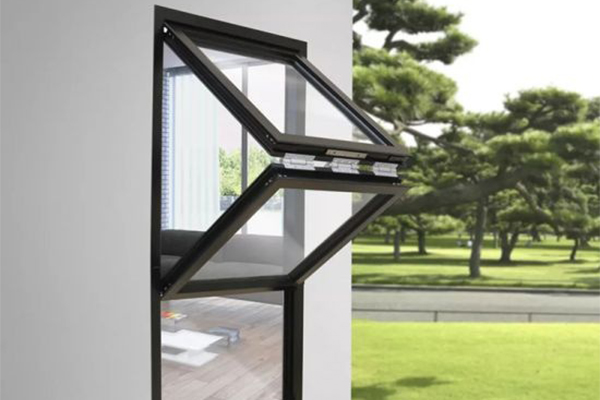
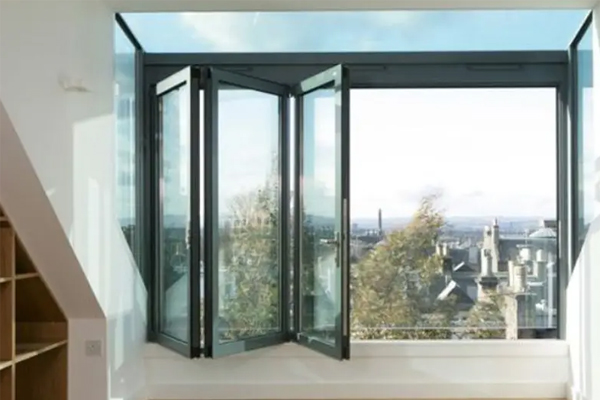
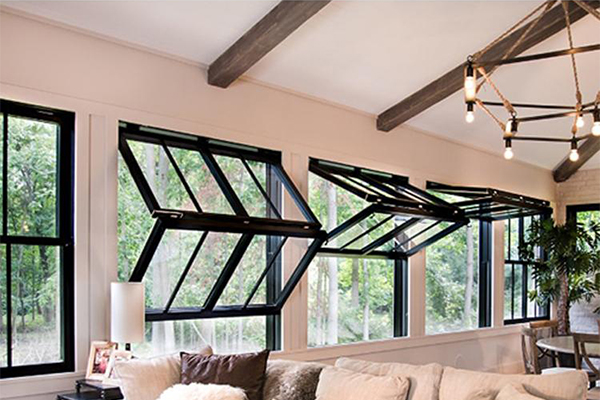

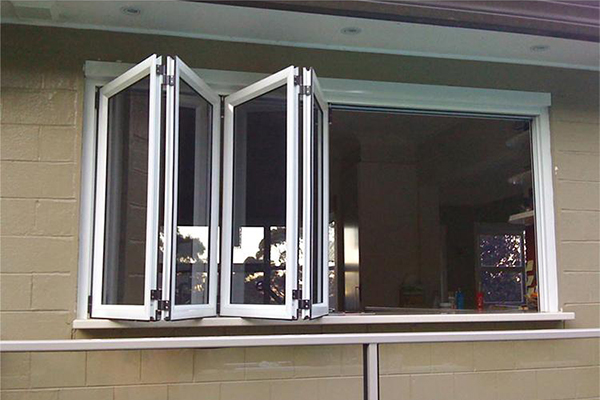
Reliable Windows Aluminium Profiles Supplier
HTS NEW MATERIALS is a professional aluminum extrusion profile manufacturer from China. With expertise in mold design, melting, extrusion, oxidation, electrophoresis, coating, and polishing, we offer a comprehensive range of services.
Our product portfolio includes aluminum profiles for windows and doors, industrial applications, and photovoltaic systems. Located in Jiangxi, our production facility spans 30,000 square meters and employs over 200 skilled professionals, allowing us to produce over 10,000 metric tons of aluminum profiles annually.
Corresponding Hardware Selection
Selecting the right hardware components is crucial for the proper operation and security of folding windows. Here are some key hardware selections to consider:
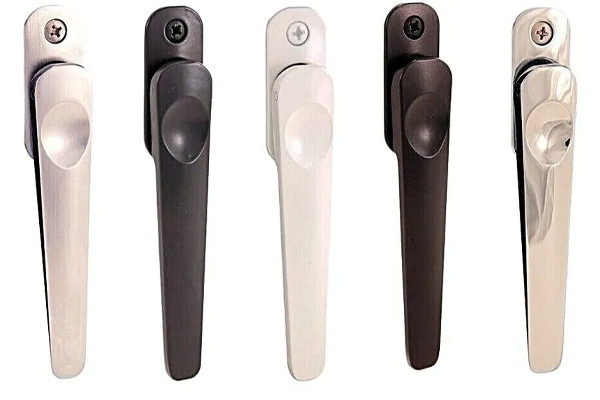
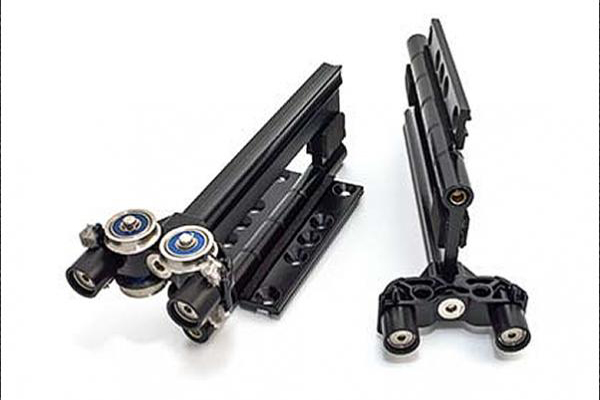
Hinges and Rollers: High-quality hinges and rollers enable smooth and effortless folding and unfolding of the windows. Stainless steel components are often chosen for their corrosion resistance and durability.
Handles and Locks: Secure handles and locks are essential for safety and convenience. They ensure that the folding windows can be easily opened and securely closed.
Weatherstripping: Effective weatherstripping is essential to create a tight seal when the folding windows are closed, preventing drafts and enhancing energy efficiency.
Multi-Point Locking Systems: For added security, multi-point locking systems can be integrated into folding windows, ensuring that they are securely fastened at multiple points along their length.
Surface
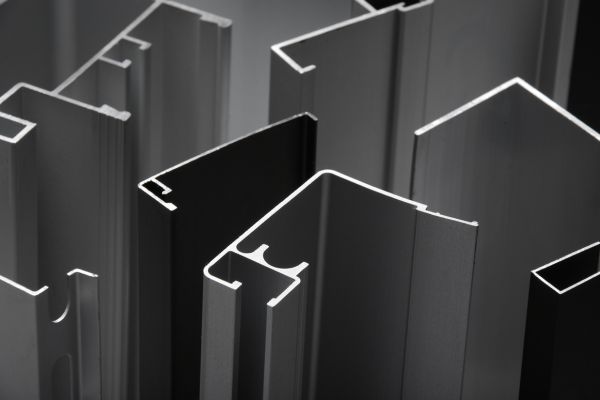
Anodizing
The aluminum profiles are immersed in an acidic solution and undergo electrolytic oxidation to form an oxide film. Anodizing enhances the corrosion resistance, hardness, and surface smoothness of the aluminum profiles. It can also be used with dyeing agents to achieve different colors.
Class of oxide film: AA10; AA15; AA20
Surface type: Matte; flat
Color: Silver white; bronze; champagne
Fetures: Corrosion resistant; durable; shining and decorative

Electrophoretic Coating
The charged aluminum profiles are immersed in a coating solution in an electrolytic tank. Through electrophoresis, the coating evenly adheres to the aluminum surface. Electrophoretic coating provides good weather resistance, color stability, and a smooth and uniform coating.
Corrosion resistance of composite film: ≥9.5 level
Paint film cohesive: Zero lever
Paint film hardness: ≥3H
Surface: Matte; flat; high brightness
Color: Silver white; bronze; champagne
Features: Corrosion resistant; durable; smooth and shining
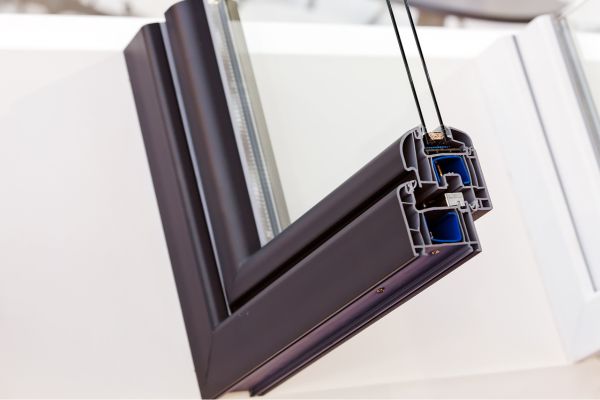
Powder Coating
Powdered coating material is sprayed onto the aluminum profiles, and then melted and cured at high temperatures. Powder coating offers durability, corrosion resistance, and a pleasing appearance. It is also environmentally friendly.
Coat thickness:40-120um
Coat shock resistance: No cracking or fall off after shock test
Coat cohesion: Zero lever
Surface type: Highly glossy; semi glossy; matte
Color: Ral color
Features: Variety of colors
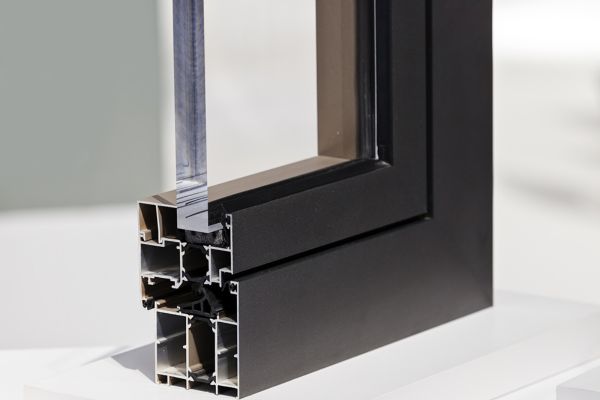
PVDF Coating
PVDF coating, a type of spray coating, utilizes a PVDF resin-based paint that provides exceptional resistance to weathering, UV radiation, and chemicals, making it suitable for demanding outdoor applications.
Coat thickness:30-65um
Coat shock resistance: No cracking or fall off after shock test
Coat cohesion: Zero lever
Glossiness: 60°
Features: With metallic luster, bright color, high weather resistance

Wood Grain Transfer
This process involves transferring wood grain patterns or textures onto the aluminum profiles using a transfer method. It gives the aluminum profiles the appearance of wood while retaining the advantages of aluminum, such as weather resistance and corrosion resistance.
Surface texture: Wooden; marble
features: Wood-like visual experience
Factory
We specialize in manufacturing high-quality, precision-engineered aluminum profiles for various industries. With state-of-the-art equipment and a skilled workforce, we produce complex profiles with exceptional dimensional accuracy using premium-grade aluminum alloys. Our customization options allow us to create unique profiles with intricate shapes, precise tolerances, and various surface finishes, tailored to your specific requirements. Quality is paramount to us, and we adhere to rigorous quality control measures throughout the manufacturing process. Our commitment to environmental sustainability is reflected in our eco-friendly practices, such as recycling aluminum scraps and optimizing energy consumption.


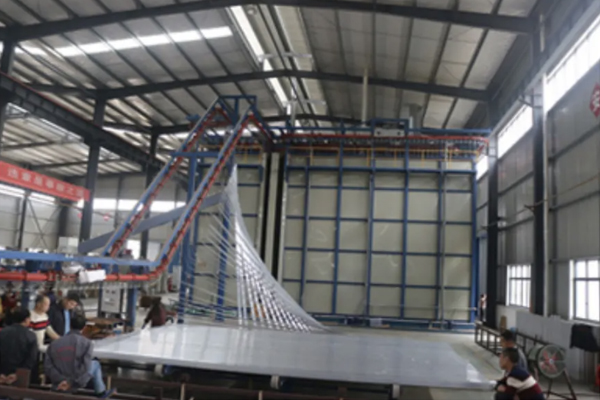
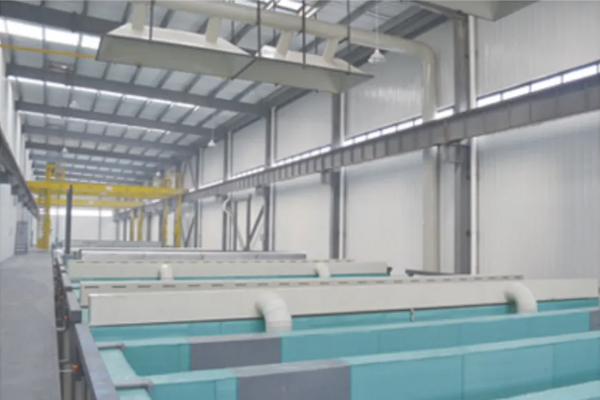
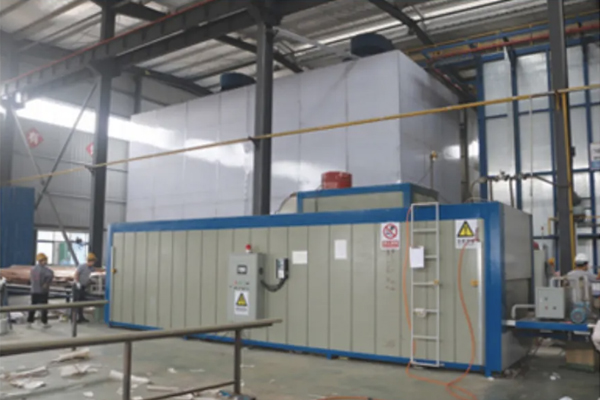
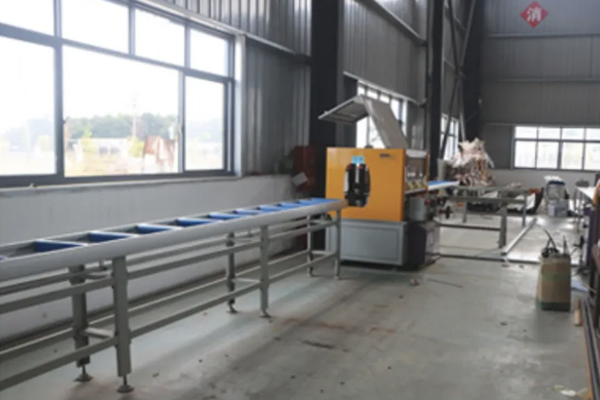
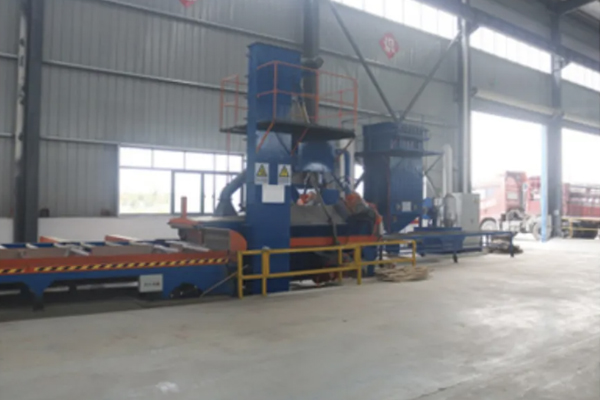
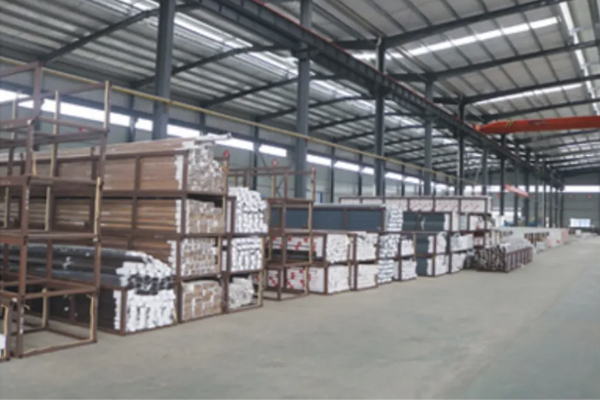
Advantages of Using Aluminum Alloy Window
Lightweight: Aluminum is a lightweight material, making it easier to handle, transport, and install. This is especially beneficial for larger windows and doors, reducing the overall weight and strain on the structure.
Strength and Durability: Despite its lightweight nature, aluminum alloy is inherently strong and durable. It can withstand various weather conditions, including extreme temperatures, humidity, and UV radiation, without warping, cracking, or corroding. This ensures a longer lifespan for the doors and windows.
Low Maintenance: Aluminum alloy doors and windows require minimal maintenance. Unlike other materials, such as wood, aluminum does not require regular painting, sealing, or extensive upkeep. Occasional cleaning with mild soap and water is usually sufficient to keep them looking new.
Design Flexibility: Aluminum alloy can be easily extruded into various shapes, sizes, and profiles, allowing for versatile design options. This flexibility enables the creation of sleek, modern, and aesthetically pleasing doors and windows, while also accommodating different architectural styles.
Energy Efficiency: Aluminum profiles can be designed to incorporate thermal breaks and insulation materials, improving energy efficiency. This helps to reduce heat transfer and enhance insulation, resulting in lower energy consumption for heating and cooling, and potentially reducing energy costs.
Recyclability: Aluminum is a highly recyclable material, meaning that it can be recycled and reused without compromising its quality. Choosing aluminum alloy doors and windows contributes to sustainable practices and reduces environmental impact.
Sound Insulation: Aluminum profiles can be engineered to provide effective sound insulation, reducing external noise pollution and creating a more peaceful indoor environment.
Fire Resistance: Aluminum alloy is inherently fire-resistant, offering an added safety feature in case of a fire.
Benefits of Thermal Break Aluminum Profile
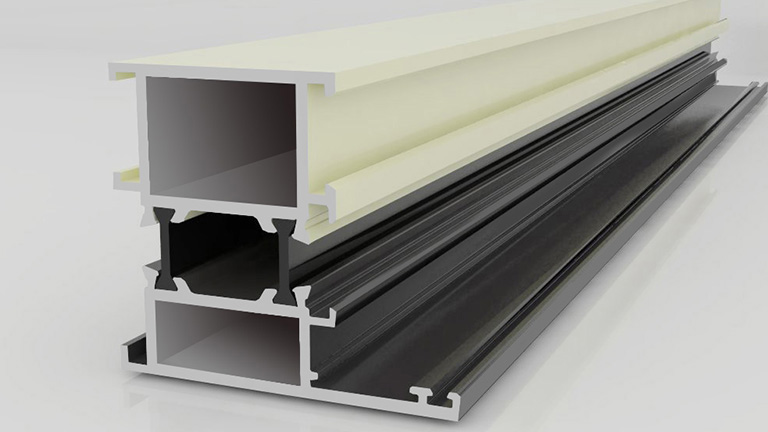
Excellent Thermal Insulation: Thermal break aluminum profiles utilize a combination of inner and outer frames with flexible connections. The frames are sealed with double seals, including one rubber strip and two wool strips, ensuring excellent air and water tightness. The window sashes are equipped with insulated glass, effectively improving sound insulation, heat insulation, and energy efficiency. The low U-value of the profiles demonstrates significant energy-saving effects, leading to long-term cost savings in heating and cooling expenses.
Waterproof Performance: The structural drainage system of thermal break aluminum windows and doors is designed based on the principle of pressure balance. The downward sloping design with step-like features and strategically placed drainage outlets ensures effective water drainage and excellent water tightness.
Frost and Condensation Prevention: The three-layer sealing structure of thermal break aluminum profiles effectively separates water vapor chambers, achieving a balance of air and water pressure. This significantly improves the water tightness and air tightness of doors and windows, preventing frost and condensation build-up.
Noise Insulation: The carefully designed structure of thermal break aluminum profiles ensures tight joints and optimal performance in noise insulation. Test results show that the air sound insulation rating reaches 30-40 dB, effectively reducing external noise disturbances. Residents living within 50 meters of a highway or in busy urban areas can enjoy a quiet and peaceful indoor environment.
How to Produce Aluminum Profile
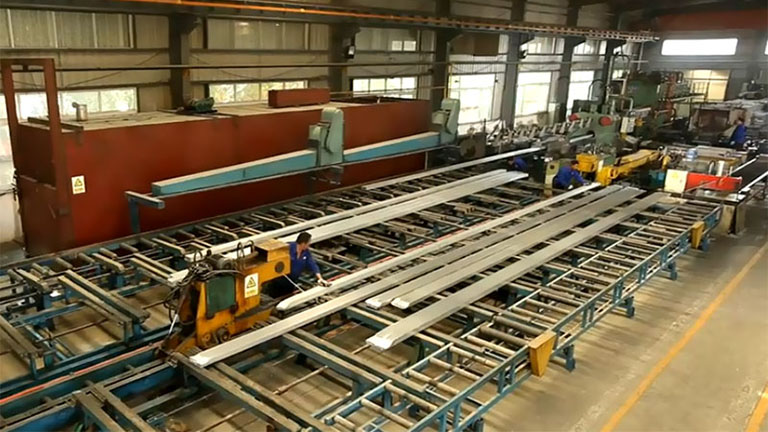
Aluminum profiles for doors and windows are manufactured using high-quality aluminum alloys, specifically designed for their structural integrity, durability, and corrosion resistance. The primary raw material used in the production of these profiles is aluminum extrusion billets.
Aluminum extrusion billets are cylindrical logs or ingots made from a blend of aluminum and various alloying elements. These alloying elements, such as silicon, magnesium, manganese, and copper, are added in precise proportions to enhance the strength, ductility, and other desired properties of the final aluminum profiles.
The billets undergo a series of processes to convert them into the desired profiles for doors and windows. The first step is heating the billets to a specific temperature, making them soft and malleable. Then, they are forced through a specially designed die under high pressure, using an extrusion press. The die imparts the desired shape and cross-sectional profile to the aluminum, resulting in the extruded profiles.
After extrusion, the profiles undergo various finishing processes, such as cutting, machining, surface treatment, and powder coating. These processes further enhance the aesthetics, functionality, and durability of the profiles, making them suitable for use in doors and windows.
How to Select Aluminum Profiles
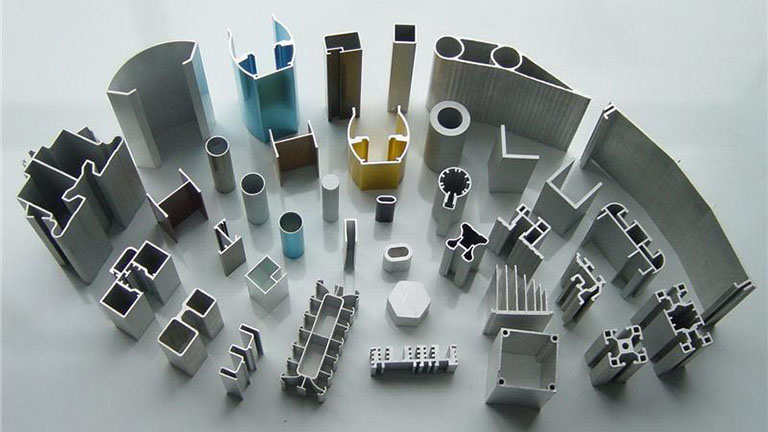
Define Your Requirements: Determine your specific requirements for the aluminum profiles. Consider factors such as the intended application, load-bearing capacity, thermal insulation needs, aesthetic preferences, and any specific industry standards or certifications that may be required.
Assess Material Quality: Check the material grade of the aluminum profiles. High-quality profiles often use standardized aluminum alloy grades such as 6061, 6063, or 6082. Verify if the profiles are made from pure aluminum or if they are alloyed with other elements to enhance their properties.
Physical Inspection: Physically inspect the profiles to evaluate their quality. Look for smooth and uniform surfaces, free from visible defects like scratches, dents, or irregularities. Check the dimensions and tolerances to ensure they meet your specifications.
Surface Treatment and Coating: Examine any surface treatments or coatings applied to the profiles. Anodized or powder-coated finishes are common for enhanced protection and aesthetics. Assess the quality and durability of the coating, ensuring it is uniform and resistant to corrosion, fading, and scratching.
Structural Integrity: Assess the strength and structural integrity of the profiles. Consider their load-bearing capacity, rigidity, and resistance to deformation. Profiles with proper heat treatment and extrusion techniques tend to exhibit better structural properties.
Certification and Compliance: Check if the aluminum profiles meet relevant industry standards and certifications. Look for certifications like ISO 9001 for quality management systems or specific industry certifications that demonstrate adherence to recognized quality standards.
How does custom window aluminum extrusion work
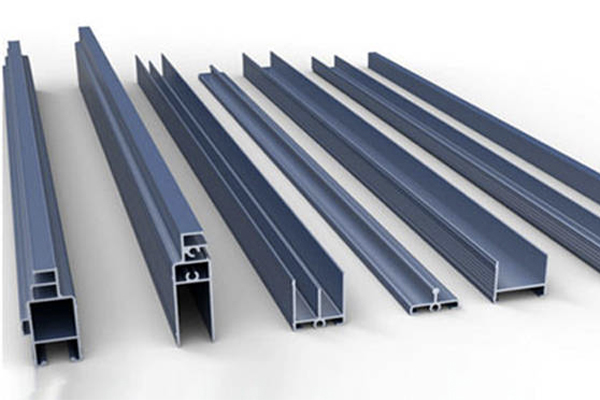
Step 1: Our engineer will review your detailed size or drawing and provide a cross-sectional drawing for your confirmation.
Step 2: We open dies for your custom extrusion, create a sample, and send it to you for approval.
Step 3: If modifications are needed, we adjust the die size until you are satisfied with the sample.
Step 4: We inspect the raw material using a spectrum analyzer and proceed with extrusion production, providing weekly progress updates.
Step 5: Depending on your desired surface finish, we offer anodizing, electrophoresis, powder coating, or PVDF options.
Step 6: To ensure safe transportation, we carefully pack your products to avoid any damage.
